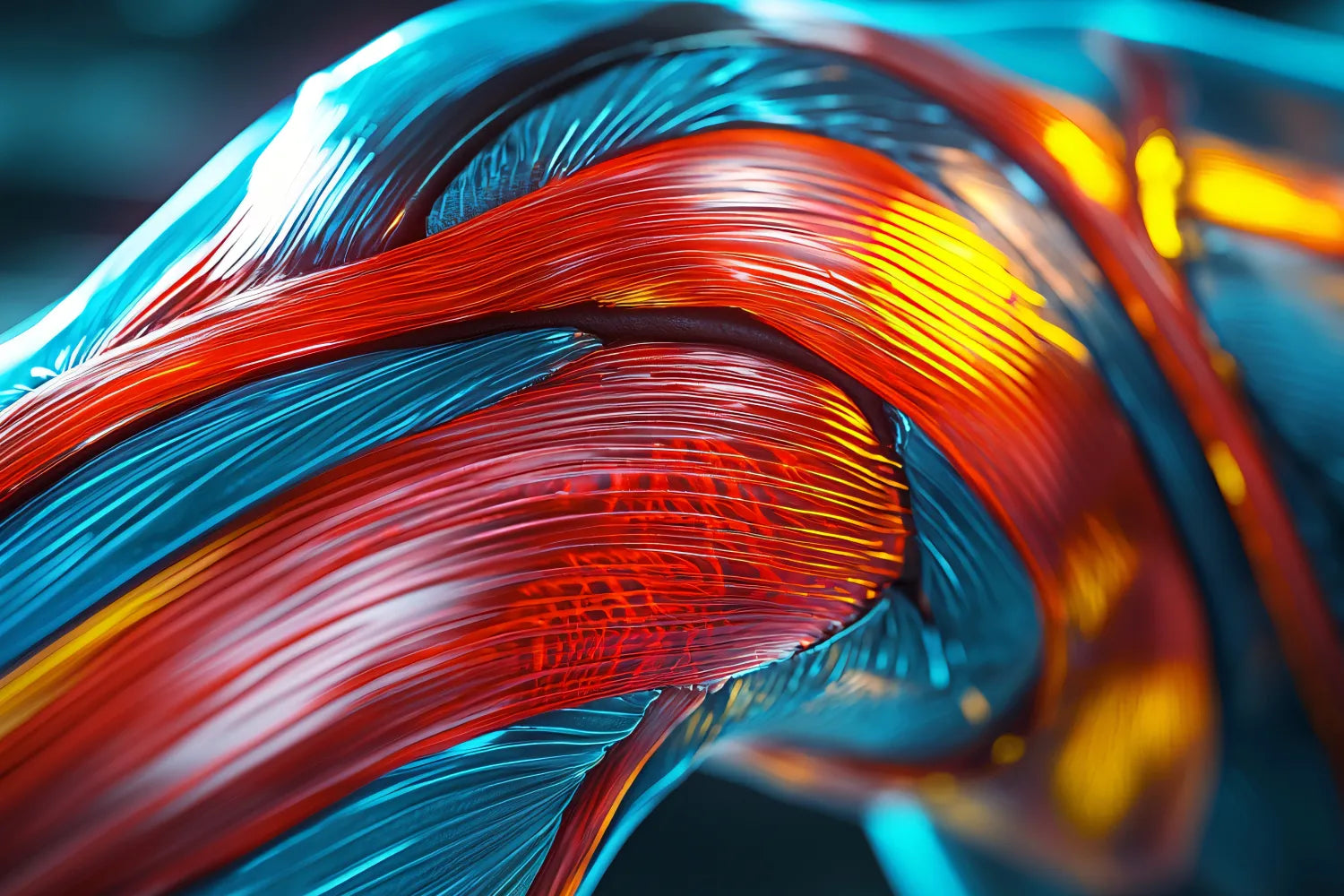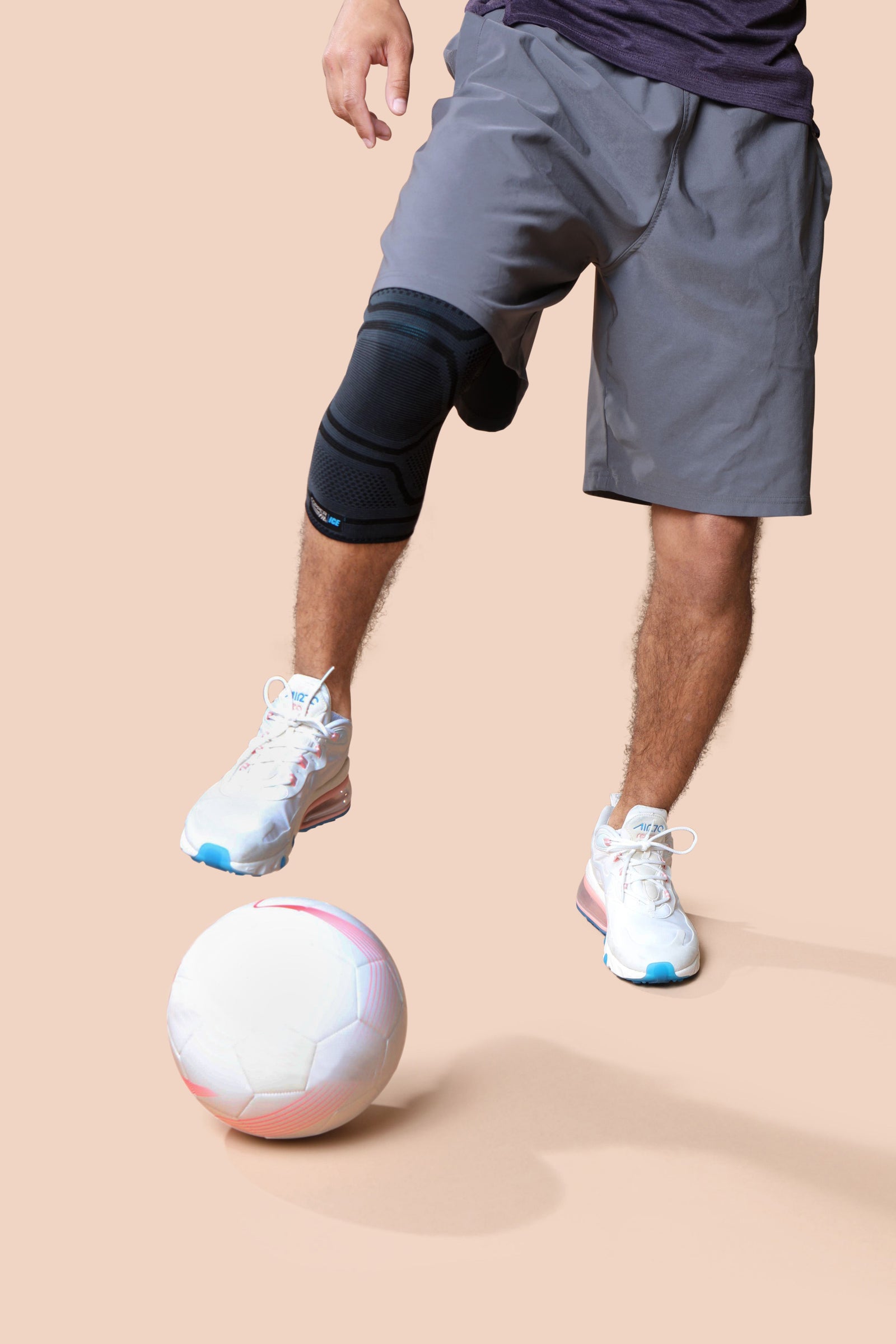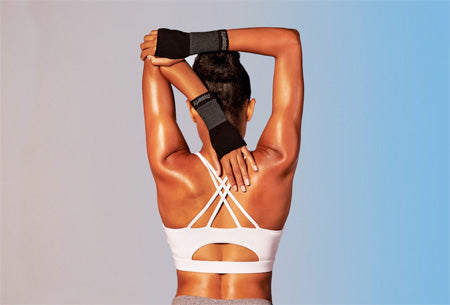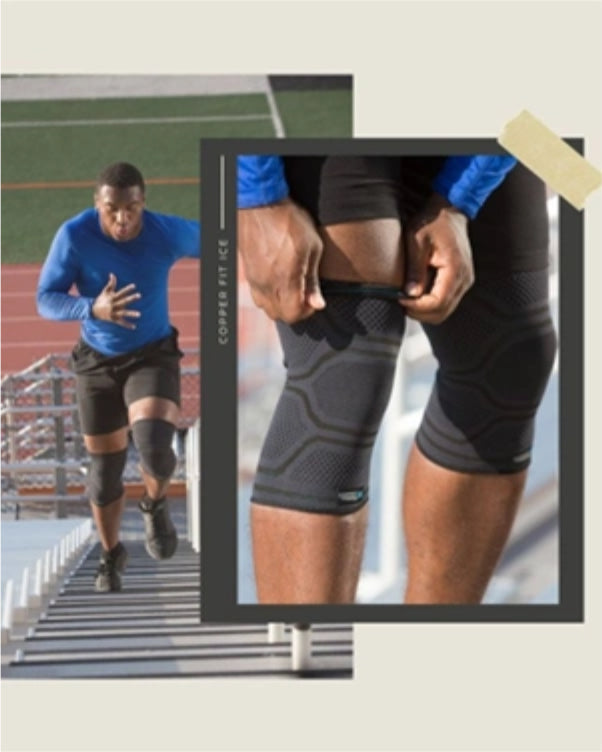
Key Takeaways
- Pulled muscles and torn muscles are both types of muscle strain, but they differ in severity and recovery needs.
- Recognizing whether you're dealing with a mild pull or a more serious tear helps you take the right steps early and avoid setbacks.
- Targeted recovery techniques can help soothe muscle tension and support the body’s natural recovery process.
Muscle strains are incredibly common, whether you're a seasoned athlete, weekend runner, or someone who’s just started getting more active. Strains happen when a muscle is overstretched or worked beyond its current limit. That can mean anything from a small pull during warmups to a more serious tear from sudden or intense movement.
The good news? Most muscle strains are manageable, especially if you know how to spot the signs early and give your body the right kind of support. But to do that, you need to understand the difference between a pulled muscle and a torn one, because the way you treat each matters.
What Is a Muscle Strain?
A muscle strain is any kind of stretch, stress, or tearing of muscle fibers. Strains can range from mild to severe, depending on how much the muscle tissue is affected.
The key thing to know is that “pulled muscle” and “torn muscle” aren’t two completely separate injuries—they’re both on the same spectrum. A pulled muscle usually refers to a mild or moderate strain, while a torn muscle typically describes a more serious one.
Muscle strains can happen for all kinds of reasons: overuse, skipping warmups, lifting something too heavy, moving suddenly or awkwardly, or even just general fatigue that causes you to move in a way that your body isn’t ready for.
Pulled Muscle vs. Torn Muscle: Spotting the Difference
Knowing what your body is going through is the first step toward supporting it properly. Here's how to tell the difference between a pulled and torn muscle.
Pulled Muscle (Mild to Moderate Strain)
A pulled muscle usually involves a small overstretch or micro-tearing of the fibers. You might feel:
- Localized soreness in a specific area
- Mild swelling
- Muscle stiffness or tightness
- Some discomfort when moving, but the muscle is still functional
This type of strain often develops gradually, maybe after a long workout, an awkward movement, or even after sleeping in a weird position. It's uncomfortable but manageable, and many people can continue light activity with care.
Torn Muscle (Moderate to Severe Strain)
A torn muscle involves more significant damage to the muscle fibers, and sometimes a partial or complete rupture. You may notice:
- A sharp or sudden feeling of tension in the muscle
- Swelling or bruising that appears quickly
- Weakness or loss of strength
- Difficulty or inability to use the muscle
- A visible indentation or lump in severe cases
Tears tend to happen more abruptly, often during high-intensity activity, and usually come with a clear moment when you realize something went wrong.
Key Differences To Watch For
When trying to determine whether your discomfort stems from a pulled muscle or a torn muscle, pay attention to the following:
- Pain level:Pulled muscles bring soreness; torn muscles often bring sharper, more intense tension.
- Mobility:You can usually still move a pulled muscle; a torn muscle may feel weak or unusable.
- Swelling/bruising:More common and more visible with tears.
- Recovery time:Pulls often heal within days; tears can take weeks or longer, depending on severity.
When Should You See a Doctor?
Not all muscle discomfort needs professional care, but some signs do. We recommend checking in with a healthcare provider if you can’t bear weight or move the muscle without significant discomfort, or if there is any swelling or bruising that appears quickly and doesn’t go away.
If you feel a pop or snap at the time of injury, or you notice a visible dent or unusual shape in the muscle, that may also be a sign to seek medical attention. And, while most muscle strains can be managed at home, if there's no improvement after several days of rest and at-home care, checking in with a healthcare provider can help ensure your path to recovery stays on track.
Tips for Managing Muscle Discomfort at Home
If you’re dealing with a mild to moderate strain, there’s a lot you can do at home to ease discomfort and support your body’s natural healing process.
Start With the RICE Method
The RICE method is a foundational approach for any kind of soft tissue strain:
- Rest:Give the affected area time to recover. Avoid activities that aggravate the strain.
- Ice:Apply cold packs in the first 24-72 hours to help soothe tension and reduce swelling.
- Compression:Use a compression sleeve or wrap to support healthy blood flow and soothe muscle fatigue.
- Elevation:If possible, elevate the area to help reduce fluid buildup.
Keep Moving—Gently
Total rest isn’t always the best approach. Once the acute soreness starts to fade, light movement helps maintain circulation and prevent stiffness. Try simple range-of-motion exercises, stretching, or walking.
Hot and Cold Therapy
Cold therapy, like an ice pack or menthol-infused sleeve, can help numb the area immediately after injury and ease swelling in the to provide relief, while heat therapy, such as a heat pad or hot towel can help encourage blood flow to the area and loosen tight muscles.
While heat therapy is great for older strains, it is not recommended for the first 48 hours after injury. Listen to your body and rotate tools based on what feels best for your discomfort and activity level.
How To Help Prevent Muscle Strains
No one can avoid every strain or soreness, but there’s a lot you can do to reduce your risk and keep your body strong and mobile.
1. Always Warm Up
Muscles respond better when they’re warm and activated. Spend five to 10 minutes on dynamic stretching or low-intensity movement before you push harder. Warming up helps prepare your muscles for the work ahead, reducing the risk of overstretching.
2. Prioritize Strength Training
Building strength makes your muscles and connective tissues more resilient. That doesn’t mean lifting heavy every day, but a consistent mix of bodyweight movements, resistance training, and flexibility work can go a long way.
3. Stay Hydrated
Dehydration affects muscle function and can increase tightness or fatigue. Make hydration part of your recovery plan, especially in hot weather or after intense workouts.
4. Pay Attention to Muscle Cues
Discomfort during a workout is one thing, while sharp or sudden tension is another. Learn to recognize the difference between healthy fatigue and warning signs of a strain. If something doesn’t feel right, don’t push it. Slowing down today might help you move better tomorrow.
FAQ
Is a torn muscle more serious than a pulled one?
Yes. Torn muscles involve more significant damage and usually take longer to recover from than pulled muscles, which are typically milder.
Can I treat a pulled muscle at home?
In most cases, yes. Rest, compression, ice, and gentle movement are effective first steps. But if symptoms persist or worsen, it’s best to talk to a doctor.
How long does muscle recovery take?
Mild strains might heal in a few days. Moderate strains could take a few weeks. Severe tears may need months of care. The more you support your body during recovery, the smoother that process can be.
The Bottom Line
At Copper Fit, we know how frustrating it is when discomfort slows you down or holds you back. Whether you’re chasing a personal best or just trying to get through the day without muscle tension, your recovery matters.
You're not alone in your recovery. With the right care and support, you can bounce back smarter, stay active longer, and do more of what moves you.
Sources:
Muscle Strains: Causes, Symptoms, Treatment & Recovery | Cleveland Clinic
RICE (rest, ice, compression, and elevation) | UK Healthcare
Benefits of Compression Gear | UPMC HealthBeat
Ice Packs vs. Warm Compresses For Pain | Johns Hopkins Medicine





